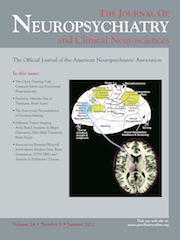Introducing a New Method for Early Diagnosis of Parkinson’s Disease
To the Editor: Parkinson’s disease (PD) is a common neurological disorder without absolute treatment. The patients would need to ask a physician for a treatment usually after 50 to 80% destruction in Substantia Nigra pars compacta (SNc).1 Therefore, the process of SNc destruction is started several years before the diagnosis of PD by the physician. Diagnosis time plays a key role in controlling the PD and postponing the disabling stages of the disease. Therefore, the disease should be diagnosed as soon as possible. Since the disease has definite motor symptoms, it seems that considering these symptoms may help to separate the at risk persons. One of the most important motor symptoms is gait disorder which is the result of rigidity, bradykinesia, postural imbalance, etc. Therefore, it seems that designating a simple walking test in general check-up tests may be helpful in early diagnosis of PD.
Different researches have evaluated the differences of gait in normal and PD cases.2,3 These studies generally focus on direct path walking. One problem is that straight walking in 3 to 5 minutes needs a proper place with nearly 100 m length, which is difficult to find in general clinics. On the other hand, in a direct path, the subject diminishes his/her gait disturbances because little control is needed in direct simple path to compensate the gait disturbances. Therefore, some components of the walking defects may be covered by more attention on the walking function. We think the circular path would be more proper for these patients; because less space is needed to do the test and the person cannot control his/her gait defects easily by concentration. On the other hand, we know that in primary stages of the disease it is more possible to have defects only in one side of the body.4 Therefore, we suppose that using an 8-shaped path for testing the gait would be useful for early diagnosis. In such path, centrifugal force is stronger to the right side in one of the circles of 8-shpaed path and to the left side in the other circle. Therefore, it seems that the patients, especially those in primary stages, may have more difficulty in one of the circles in respect to the other one.
In our proposed test, the subjects should be asked to walk a determined path for 3 minutes with their normal speed in an 8-shaped path which is determined between two chairs with 2 m distance from each other. The middle part of this distance can be marked by a sign on the ground. Then, the subjects would be asked to go around the chairs and pass from the marked point, to make an 8-shaped path.
In summary, using 8-shaped walking path can reveal the differences between healthy persons and PD patients in a proper manner. Moreover, the simplicity of the test application can make it a routine check-up test in clinics.
1 : Principles of Neural Science, 4th ed. New York, McGraw-Hill, 2000Google Scholar
2 : Gait variability and basal ganglia disorders: stride-to-stride variations of gait cycle timing in Parkinson’s disease and Huntington’s disease. Mov Disord 1998; 13:428–437 10.1002/mds.870130310Crossref, Medline, Google Scholar
3 : Analysis of spatial temporal plantar pressure pattern during gait in Parkinson’s disease. 30th Annual International IEEE EMBS Conference Vancouver, British Columbia, Canada, August 20-24. 2008.Google Scholar
4 : Parkinson’s disease Diagnosis and Clinical Management, 2nd ed. New York, Demos Medical Publishing, 2008Google Scholar



